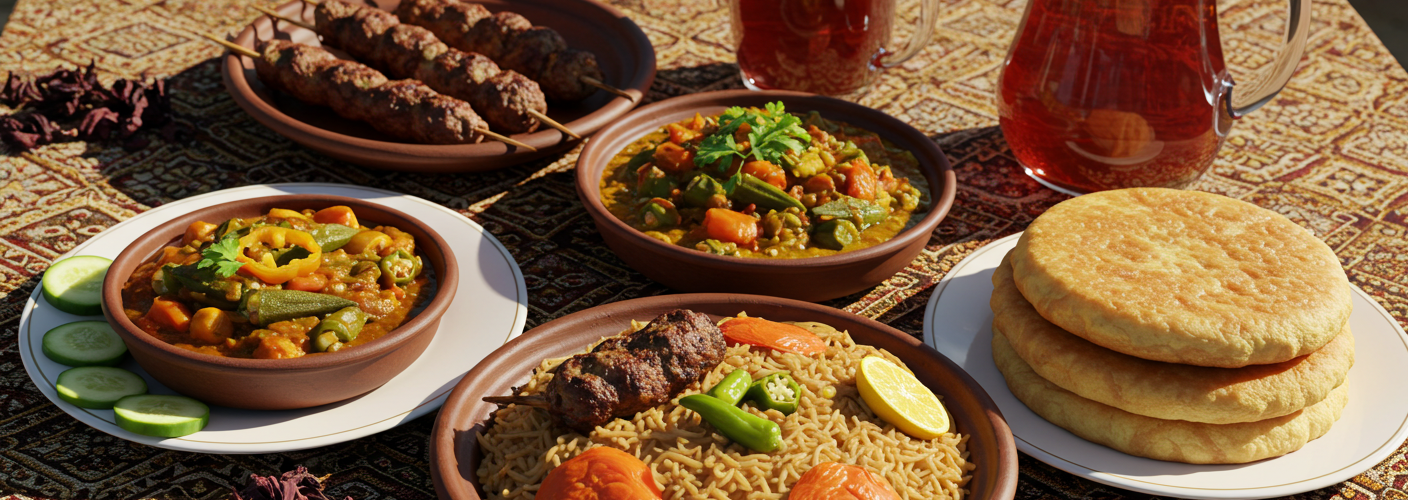Sudan, a country located in the northeastern part of Africa, boasts a diverse and vibrant culinary heritage that reflects its rich history and cultural diversity. With influences from Arabic, African, and Mediterranean cuisines, Sudanese food presents a unique fusion of flavors, ingredients, and cooking techniques that are both delicious and deeply rooted in tradition.
At the heart of Sudanese cuisine lies the staple food called “kisra,” a flatbread made from sorghum flour. Kisra serves as a fundamental part of many meals, often used to scoop up various stews and sauces. Its texture is slightly sour, thanks to the fermentation process during preparation. This bread is not only a dietary staple but also a cultural one, often associated with communal eating and gatherings.
One cannot explore Sudanese food without mentioning “tagine,” a dish named after the earthenware pot used to prepare it. Sudanese tagine is typically a slow-cooked stew that may include a variety of meats, vegetables, and aromatic spices. Lamb and chicken are common choices, cooked with onions, garlic, coriander, and cumin, resulting in a rich and satisfying meal. Locals often serve tagine with rice or kisra, making it a comforting option for families.
Another beloved dish is “foul,” a hearty fava bean stew. Foul is commonly enjoyed for breakfast and is prepared by simmering boiled fava beans with garlic, lemon juice, and a mix of spices. It’s typically garnished with olive oil and served with bread, making it a nutritious and hearty start to the day. In urban areas, street vendors offer delicious variations of foul, creating a convenient and affordable option for locals.
In addition to these staples, Sudanese cuisine features a variety of side dishes and salads that complement main meals. One popular option is “salatat zabda,” a refreshing salad made primarily of cucumbers and tomatoes, dressed with lemon juice and spices. This dish adds a burst of fresh flavors to the meal, highlighting the importance of vegetables in Sudanese diets.
Moreover, legumes hold a special place in Sudan’s culinary landscape. Dishes like “muhammara,” a spread made from ground nuts and spices, showcase the local love for intense flavors and textures. It is frequently enjoyed with bread, making it a popular choice among snack foods.
When it comes to beverages, Sudan has a rich tradition of drinks, with “karkadeh” (hibiscus tea) being a standout. This vibrant red tea is not only refreshing but also boasts several health benefits, including aiding digestion and lowering blood pressure. It is often consumed hot or cold, making it a versatile option to enjoy throughout the year.
One cannot discuss Sudanese food without mentioning its seasonal and festive dishes. During special occasions, you might find “asida,” a delicacy made from wheat flour, typically served with a variety of stews or sauces. It embodies the communal spirit of Sudanese dining, as families often gather around to share this unique dish.
In conclusion, Sudanese cuisine is a reflection of the country’s culture, history, and traditions. With its array of flavors, textures, and aromas, it offers a culinary experience that captivates the senses. Whether enjoying a traditional kisra with stew or relishing a steaming cup of karkadeh, embracing Sudanese food is a delicious journey into the heart of this vibrant nation.




Add comment